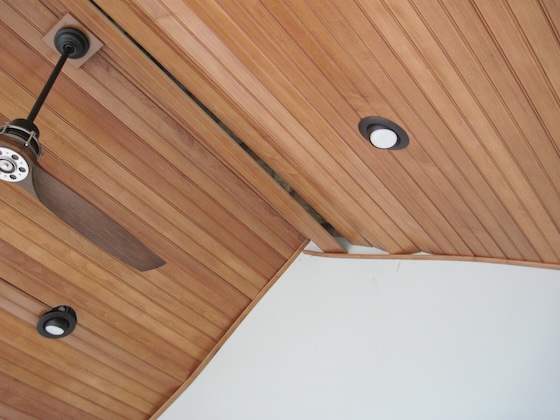
The Importance of Chimney Inspections
Chimney inspections play a vital role in maintaining the safety and functionality of your fireplace. Regular inspections ensure that any potential issues or hazards are identified and addressed promptly, reducing the risk of chimney-related accidents and improving overall efficiency. By keeping your chimney in optimal condition, inspections also contribute to the longevity of your fireplace system.
One key reason for conducting chimney inspections is to check for the buildup of creosote. This black, sticky residue forms when wood or fossil fuels are burned and can accumulate inside the chimney over time. If left unchecked, creosote can lead to chimney fires as it is highly flammable. Inspections help determine the level of creosote buildup and enable the necessary steps to be taken to mitigate this risk. Additionally, inspections can identify other potential issues such as structural damage, blockages, or bird nests, ensuring that your chimney operates smoothly and safely.
Understanding the Purpose of Chimney Camera Inspections
Chimney Camera Inspections have become an essential tool for homeowners and chimney professionals alike. The purpose of these inspections is to provide an in-depth visual assessment of the chimney’s interior, allowing for a thorough examination of its condition. Unlike traditional inspections that rely on external observations, chimney camera inspections provide a detailed view of the internal components, identifying potential issues that may not be visible from the outside.
One of the main purposes of chimney camera inspections is to detect any structural damage or deterioration. Over time, chimneys can experience wear and tear due to weather conditions, age, or even improper maintenance. By using a specialized camera, chimney professionals can closely examine the walls, flue lining, and other vital components, looking for cracks, gaps, or signs of deterioration. This thorough assessment helps to identify potential hazards and avoid costly repairs in the future.

How Chimney Camera Inspections Work
Chimney camera inspections are conducted using specialized equipment designed to provide a visual assessment of the chimney’s interior. The process begins by attaching a small camera to a flexible rod or cable, which is then inserted into the chimney flue. As the camera is guided through the flue, it captures real-time footage, allowing the technician to thoroughly inspect every nook and cranny of the chimney.
The camera used in these inspections is equipped with high-quality lights that illuminate the entire area, making it possible to detect the smallest of issues. The footage captured by the camera is displayed on a monitor, allowing the technician to analyze the condition of the chimney in detail. The technician can maneuver the camera in different directions, getting a comprehensive view of any potential problems, such as cracks, blockages, or buildup of creosote. This thorough examination helps identify any safety hazards or required repairs, ensuring the chimney is in optimal working condition.
Benefits of Using Chimney Camera Inspections
Chimney camera inspections offer several benefits for homeowners and chimney professionals alike. Firstly, these inspections provide a thorough and accurate assessment of the chimney’s condition. By using a specialized camera, inspectors can easily identify any structural damage, blockages, or buildup of creosote and debris within the chimney. This detailed visual inspection allows for a more precise diagnosis of potential issues, enabling homeowners to take appropriate action to address them.
In addition to pinpointing problems, chimney camera inspections are also a cost-effective option. Traditional inspection methods often require extensive manual labor, such as dismantling parts of the chimney or using mirrors to view the interior. These methods can be time-consuming and costly. However, with the use of a camera, inspectors can quickly assess the condition of the chimney without the need for extensive labor, resulting in lower expenses for homeowners. Moreover, the accurate and detailed documentation provided by the camera inspections can also help in establishing better communication between homeowners, chimney professionals, and insurance companies if a claim is required.
Common Issues Detected by Chimney Camera Inspections
During chimney camera inspections, there are several common issues that can be detected. One of the most common issues is the presence of creosote buildup. Creosote is a highly flammable substance that can accumulate inside the chimney and cause a fire hazard if not removed regularly. By using a chimney camera, inspectors are able to identify the amount of creosote buildup and recommend appropriate cleaning methods to ensure the safety of the home.
Another common issue that can be detected by chimney camera inspections is the presence of cracks or damage in the chimney liner. The chimney liner is an important component of the chimney as it protects the surrounding structure from heat and corrosive materials. If the liner is damaged, it can lead to leaks, which can cause water damage and deterioration of the chimney over time. During a chimney camera inspection, inspectors are able to identify any cracks or damage in the liner, allowing for timely repairs or replacement to prevent further issues.
Chimney Camera Inspections: A Closer Look at the Technology was first seen on https://chimneysweeplosangeles.net/





More Stories
The Role of Chimney Inspections in Homebuying
The Rise of Bed Bugs: Why Are They Making a Comeback?
Chimney Masonry Repair 101: Restoring Beauty and Functionality